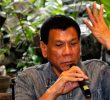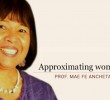Taking cue from the previous issue of this column, a critical assessment on women’s education was done as part of a literature review on the sprout of women organizations in the country.
It was in Cory Aquino’s administration that key issue in women’s consciousness-raising came to light among the progressive left in the women’s movement. Primarily, women’s political education tended to overlook the fact that women belong to various classes and have diverse situations. Even in Mindanao, women leaders, wittingly or unwittingly, went through sort of cooptation as the tendency was to stress the common oppression of women as women. Oblivious of the fact that gender issues affect women from different classes in different shapes.
Such sectarian tendency relegates the proletarian world outlook to oblivion as the women revolutionaries reiterated in the unpublished document of MAKIBAKA, Women and the Revolution, mentioned in the first part of this series.
Further it says, partnership with the government agencies then became a principal undertaking that is understandably the creation of the feminist theorizing at that time. It was true that instead of exposing the ills of the state as they impact on poor women, the women organizations were used as props by the state to refurbish its image under the guise of ‘democratic consultations” and people empowerment’.
Undoubtedly, the activist nature of women’s organizations thus was slowly eroding until such time that the criticisms seeped into women leaders’ thinking and processes within the progressive women’s movement and realized the deviations, at least among the militant organizations. It was indeed a great exercise on dynamism and on reading the situation objectively and concretely.
Notwithstanding, true to its form, the movement’s campaign activities were put on high gear, not just championing the cause of women but of the people as well. The women’s movement was at the forefront fighting issues against sex trafficking, rape and prostitution, sexual harassment, abuse of migrant women, and many more.
With high visibility, the women were in the streets for the removal of the US bases, economic crises, total war and other human rights violations, with great mileage in the press.
Women activists were in their firm resolve to sustain education, organizing and mobilization of women in that women affirmed the correctness of the perspective that class contradictions and national oppression must be decisively resolved to lay the ground work for the total emancipation of women. And as a cliche goes, there is no free nation when its own women are not free and women are not free when the nation is not free.
Women indeed suffer from distinct forms of oppression stemming from patriarchy that has been aggravated and deepened by feudalism, colonialism, capitalism and imperialism as in the Philippine context.
The struggle to free our nation and society is intertwined with the struggle to liberate the women. Only by overthrowing foreign and feudal rule and later on, smashing other social structures that buttress patriarchy, can the basic conditions for the liberation of women be established, the progressive left declares. To this I subscribe since 1983 as I got myself into grassroots women studies and the Filipino people’s problems in the south–rooting out their systemic and historic characteristics.










